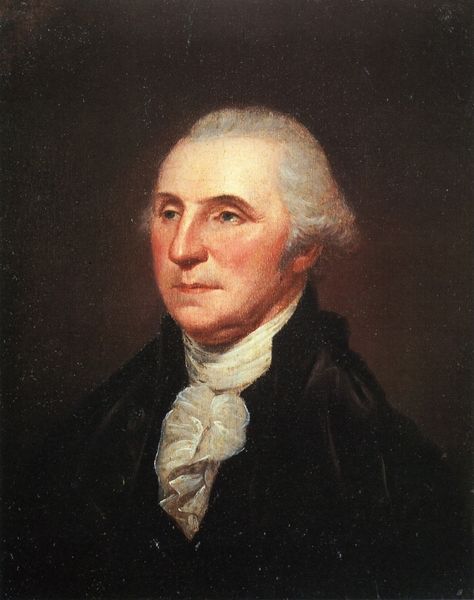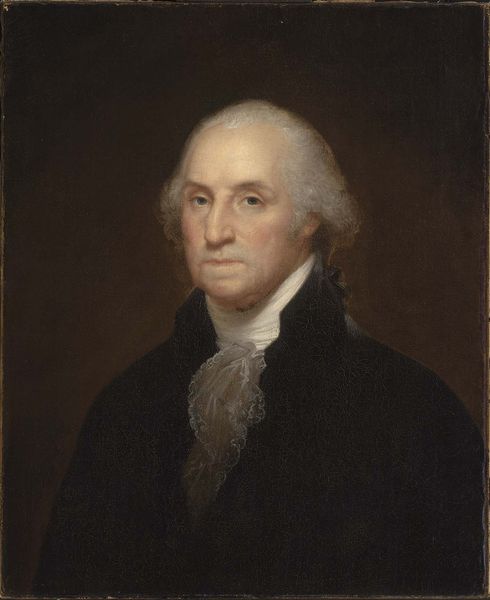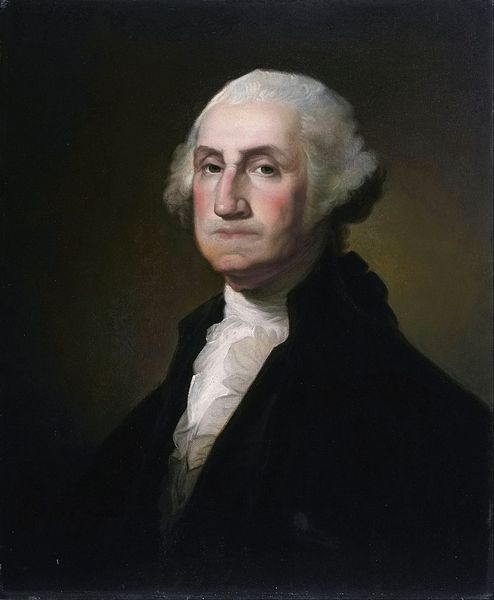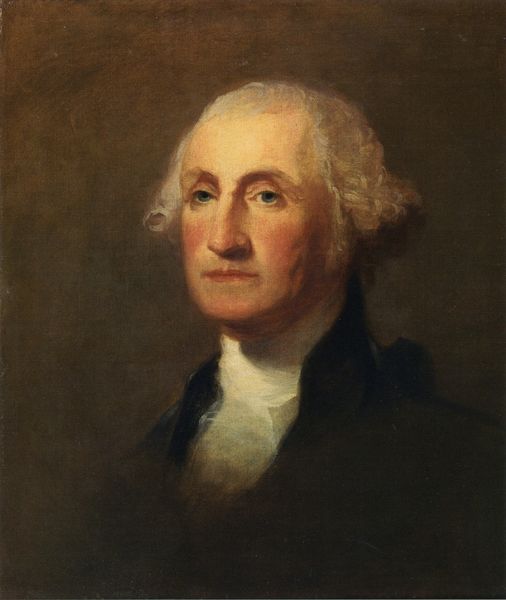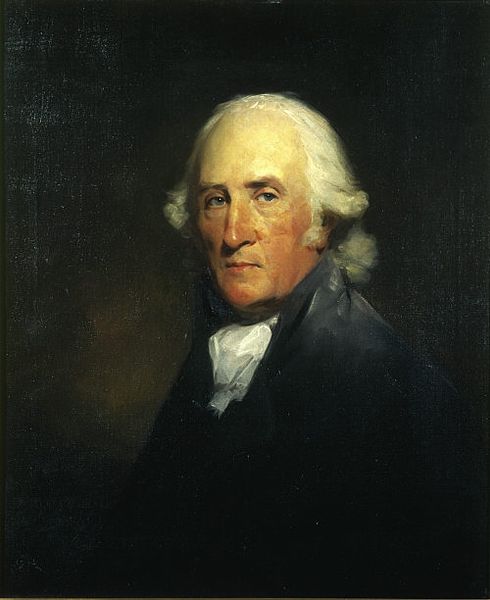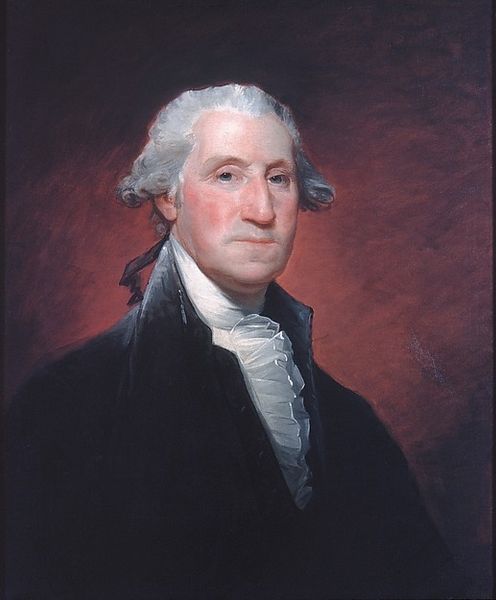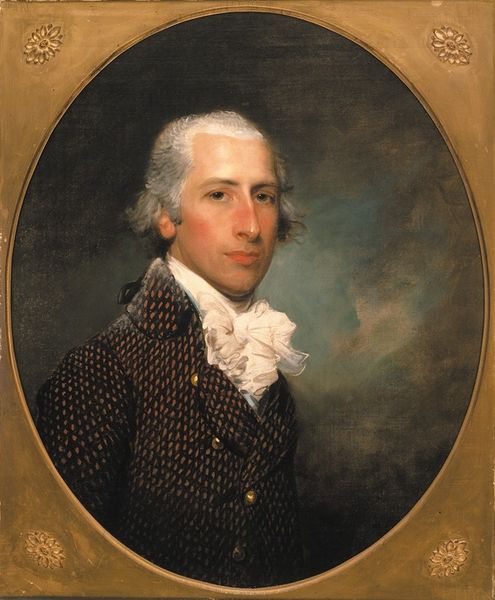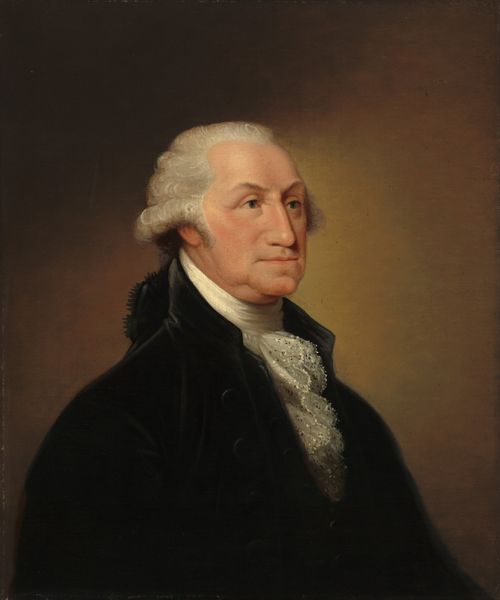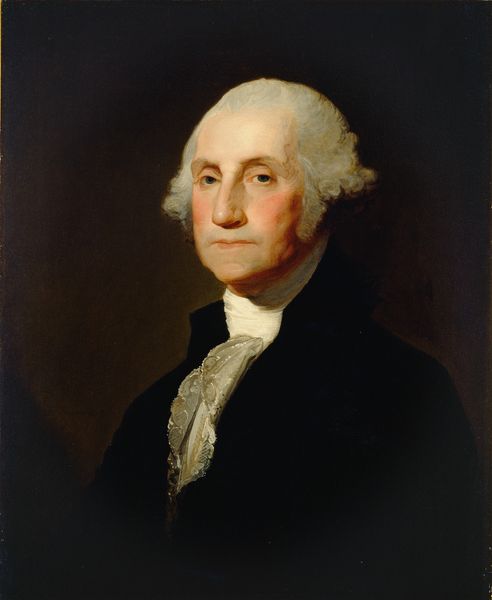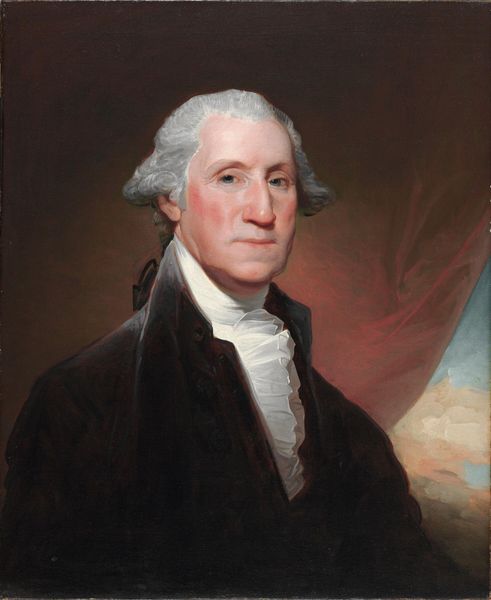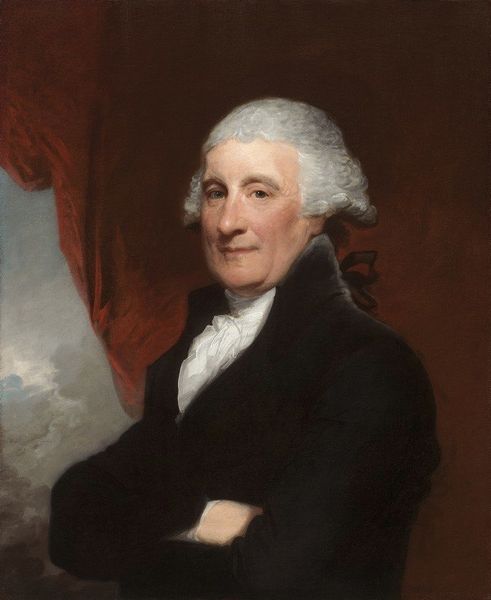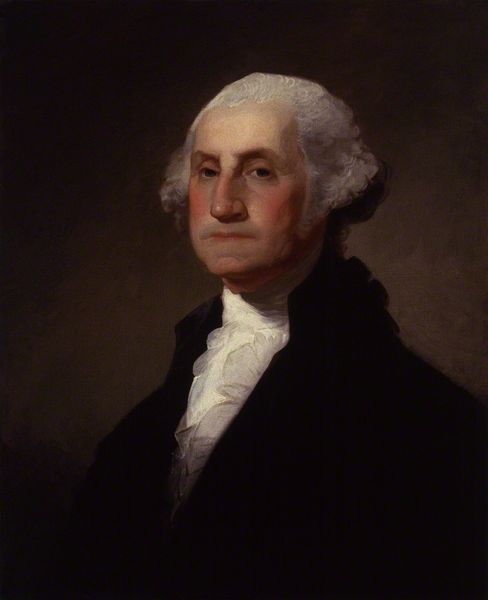
painting, oil-paint
#
portrait
#
neoclacissism
#
painting
#
oil-paint
#
academic-art
Copyright: Public Domain: Artvee
Curator: Gilbert Stuart's portrait of James Madison, dating from around 1821, offers us a glimpse into the image-making of early American leadership. Editor: He looks...tired. There's a weariness in the eyes, despite the formal pose. The paint itself seems thickly applied, giving texture to the face and clothing. It's all oil, right? Curator: Yes, oil paint on canvas. Stuart was, after all, the preeminent portraitist of his era, crafting images of power for figures like Washington and, here, the former president Madison. It's interesting how these portraits played a key role in shaping public perception of these leaders, establishing a visual legacy. Editor: And what kind of legacy do you think it portrays, looking at this specific image? You mention power, but what I am immediately seeing is all about craft and materials and less about political strength, though. Curator: Well, that is something worth noting that even the portraits aimed at communicating power, needed skilled artisanship to project political authority and convey virtue through particular visual language. So here Stuart utilizes conventions of neoclassical portraiture to convey that Madison’s enduring political strength is actually in the virtues. But that interpretation could differ given how portraiture could reflect both individual sitter’s intention and social ideals about citizenship. Editor: Interesting! Though it may seem traditional to portray political power with these virtues of wisdom and serenity. However, these academic artworks really highlight not only the figure and their history, but how social systems can come together through portraiture by elevating public individuals and showcasing the mastery in its creation. This piece seems to be a great example of this kind of collaboration that can bridge both the maker and social impacts of an art piece. Curator: Absolutely. Stuart’s process and materials became intertwined with this country’s visual construction of its own history, and how history is always subject to different interpretations based on contemporary social issues and debates. Editor: And, I would argue, our individual positions and inclinations! A fascinating blend of hand, mind, and historical moment, regardless of your interpretive approach.
Comments
No comments
Be the first to comment and join the conversation on the ultimate creative platform.
